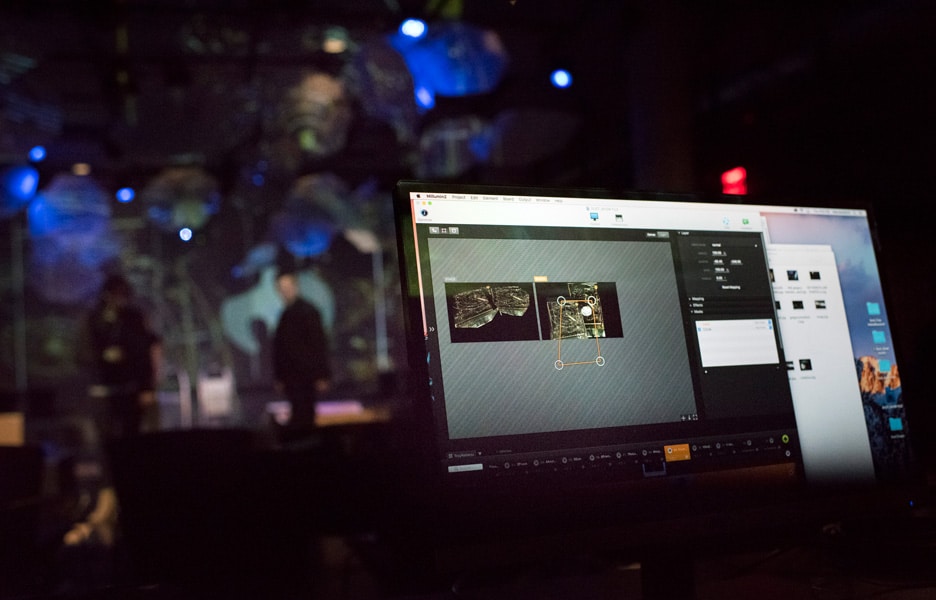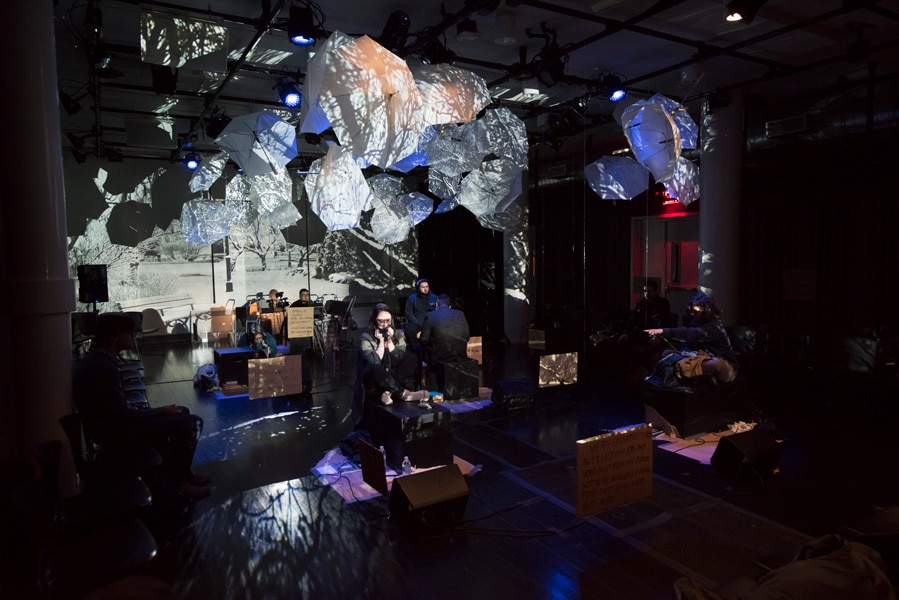It’s arguable whether Robert Ashley’s 1998 opera “Dust,” scored for solo voices, prerecorded orchestra, and electronics, is a masterpiece of opera—but it is certainly a masterpiece of political art in its evocation of empathy for marginalized people. During the 90 minute work, we hear the conversations and monologues of a cast of five homeless characters, based on the New York City homeless people whom Ashley observed in a park near his apartment during the 1980s and 1990s. (After budget cuts for homeless shelters by Ronald Reagan, “The Great Communicator,” many homeless people were forced into the streets.) Ashley, who himself inhabited the frequent failures of communication associated with his Tourette’s Syndrome, was fascinated by “the problem of communication” he observed in the park. In “Dust,” he gives voice to those who usually remain invisible—not only unseen, but unheard.

The opera begins with “I live in the park,” an otherwise nameless man (spoken and sung by Ashley in the 1999 recording), introducing his five friends who also live there: The Man in the Green Pants, Lucille, The Rug, Shirley Temple, and No Legs. This last persona, No Legs, is a nonspeaking character in the opera, yet his is the story that gets told the most frequently of all. His repeated refrain has become memorized by the other five park-dwellers, to the point that throughout the opera this refrain is chanted underneath their stories, which have all been meticulously timed to match up with this refrain. The characters, in speech that is spoken rather than sung, recount mundane and embarrassing anecdotes about bad acid trips, getting beaten up, and veggie burgers, while No Legs’s traumatized account of losing his legs in an unnamed war can be heard beneath them. During the second half of the opera, the characters give voice to No Legs’s memory of the cheesy songs he heard in the hospital while doped up on morphine.
In a recent (and rare) revival of the opera at the Mannes School of Music, these characters were brought to life through the sounded voices of Mannes students whose interpretation managed to strike a balance between homage to Ashley and their own fresh interpretation. Julia Meadows was particularly impressive as Lucille (“she used to be sort of cute, but now she’s getting older”), truly making you hear her various stories rather than simply the strings of words and sounds. As “I live in the park,” Mario Diaz-Moresco was likewise convincing, urgently telling us of his experience finding a discarded museum ticket on the ground and dressing as “normal” as possible in order to be allowed in to look at the art. The vocalists had been coached by music director Joan La Barbara, who sang Lucille on the 1999 recording. Production had been carried out by Tom Hamilton, another former Ashley collaborator who, alongside Ashley’s widow Mimi Johnson, has blessed the New York City music scene with productions and reimaginings of Ashley operas following the composer’s 2014 death.
On a brutally cold February day, it was particularly affecting to take refuge indoors in a theater set up to mirror the city streets below, where, as of 2016, almost 63,000 homeless people live (a number that has increased steadily since the late 1970s). As audience members filed into the space, the vocalists were already present and blurting out awkward exclamations to themselves and each other, surrounded by a scattering of handwritten cardboard signs. A vaguely cartoonish soundtrack of traffic permeating the space. Aspects of enchantment mingled with the drab visuals (though admittedly, the performers could have looked slightly more bedraggled in their costumes): an array of white umbrellas hung upside down from the ceiling and swirling imagery was projected against the backdrop of the stage. Scenographer Troy Hourie’s projections, which ranged from stock photos of “dwellings” and other structures like churches and Mexican restaurants, to a rainstorm of red rose petals, successfully layered an “experimental visual landscape” with the equally experimental sounds of Ashley’s score.

These visual and dramatic components fleshed out the musical and philosophical narratives conveyed in Ashley’s composition. The repetitions of the final line, “there is nothing wrong with you,” set against Hourie’s softly dancing projections of stars and snow, were particularly moving. After an hour and a half of talking at each other, the characters are finally able to isolate a single idea in unison; as Ashley put it, “as if they are five parts of one, grand character that embodies homelessness.” Their sung voices convey a message of acceptance rather than false hope. On some small level, they seem to have solved their own problem of communication; Ashley wrote regarding the characters of “Dust” that
[they] are “homeless” simply because they live outside of the rules of language that govern a civil society. They are not dangerous to society. In some cases they have lived and still could live useful lives. Their problem is “communication”—what it means and how you do it. They talk all at the same time or they don’t talk at all. They talk to themselves or to any person who happens to be passing by.
This linguistic rule-breaking isolates and erases the homeless characters from the patterns and language of “normal” society, who choose not to hear the sounds of homeless people even when they are screaming at cars or crying out for help. The fact that the characters of “Dust” have memorized each other’s stories and songs indicates the triumph of their nonconformist structures of communication.

This idea of “many stories (monologues) being told at the same time” was new for Ashley, though the concept of talking-as-opera was not. He had composed numerous vocal works, including his television opera trilogy (1976-1994), by the time he conceived of “Dust.” Like “Dust,” these works lack traditional scores, and are notated with grids: one row for each line of the libretto, with columns indicating extratextual information, such as which vocalist is to speak, a central tonality (if there is one), and how many beats per line and beats per minute. In “Perfect Lives,” a bank robbery becomes a metaphor for all manner of philosophical crimes and misdemeanors; in “Now Eleanor’s Idea,” he allegorizes Giordano Bruno’s memory system through tap-dancing, and an airline ticket counter stands in for the scene of the Spanish Inquisition. And in “Dust,” homelessness is allegorized with overlapping thoughts and futile communication.
The characters in these operas, though grappling with philosophical issues both obscure and grandiose, are normal Americans who stutter and mumble. (Language, its limitations, and the ideas that can be derived from it, are recurring themes for Ashley, whose Tourette’s Syndrome caused him to hear seven-syllable phrases repeated over and over in his head.) Ashley refused to objectify the voices of the marginalized—old people, poor people, homeless people. By conveying these voices through speech rather than song, he maintained a focus on narrative meaning alongside, and sometimes superseding, musical meaning. Although not a perfect production, the Mannes performance of “Dust” was one of the only artistic events I had attended since January 20 that did not feel indulgent or pretentious. Rather than simply yelling from a place of privilege, Ashley reminds us that sometimes the most political approach to music-making is to amplify the mumbled voices of those existing on the margins. ¶












